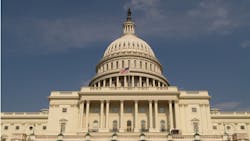Federal Plan to Tackle the Racial Wealth Gap Includes a Procurement Focus
Download this article in PDF format.
The Biden-Harris Administration has released an ambitious plan focused on narrowing the racial wealth gap in the U.S. and reinvesting in communities. The plan is focused on expanding access to two wealth-creators—homeownership and small business ownership—in communities of color and disadvantaged communities.
Procurement will play a part in helping the administration achieve its goals. For example, the administration wants to leverage the federal government’s purchasing power to grow federal contracting with small disadvantaged businesses by 50%, according to a White House Fact Sheet.
The administration says this will translate into an additional $100 billion over five years. Using the American Jobs Plan as a foundation, the administration will also roll out:
- A new $10 billion Community Revitalization Fund to support community-led civic infrastructure projects that create innovative shared amenities, spark new local economic activity, provide services, build community wealth and strengthen social cohesion.
- $15 billion for new grants and technical assistance to support the planning, removal or retrofitting of existing transportation infrastructure that creates a barrier to community connectivity, including barriers to mobility, access or economic development.
- A new Neighborhood Homes Tax Credit to attract private investment in the development and rehabilitation of affordable homes for low- and moderate-income homebuyers and homeowners.
- $5 billion for the Unlocking Possibilities Program, a grant that awards flexible and attractive funding to jurisdictions that take steps to reduce needless barriers to producing affordable housing and expand housing choices for people with low or moderate incomes.
- $31 billion in small business programs that will increase access to capital for small businesses and provide mentoring, networking, and other forms of technical assistance to socially and economically disadvantaged businesses seeking to access federal contracts and participate in federal research and development investments.
Supporting Small, Disadvantaged Businesses
As the world’s largest consumer of goods, the federal government buys everything from software to elevator services to financial and asset management. “Federal procurement is one of our most powerful tools to advance equity and build wealth in underserved communities,” the administration points out on the fact sheet.
“And yet, just roughly 10% of federal agencies’ total eligible contracting dollars typically go to small disadvantaged businesses (SDB), a category under federal law for which black-owned, Latino-owned, and other minority-owned businesses are presumed to qualify,” it continues. “Increasing federal spending with these businesses will help more Americans realize their entrepreneurial dreams and help narrow racial wealth gaps.”
With this in mind, the administration is launching an agency-wide effort to expand contracting opportunities for underserved small businesses across the country. Its new goal is centered on “increasing the share of contracts going to small disadvantaged businesses by 50% by 2026—translating to an additional $100 billion to SDBs over the 5-year period,” the administration explains.
“To achieve this goal, agencies will assess every available tool to lower barriers to entry and increase opportunities for small businesses and traditionally-underserved entrepreneurs to compete for federal contracts,” it continues. “The impact could be historic: all told, attainment of the new goal will represent the biggest increase in SDB contracting since data was first collected more than 30 years ago.”
As part of the American Jobs Plan, the government will also invest $30 billion in new Small Business Administration (SBA) initiatives that will reduce barriers to small business ownership and success.
“The plan will also invest billions of dollars in SBA technical assistance programs that incubate and offer mentoring and technical assistance to 8(a) firms; reinforce the American subcontracting network to create pathways to prime contracting; encourage Fortune 500 firms to diversify their procurements,” the administration says, “and bring more socially and economically disadvantaged businesses into federal research and development programs.”
Expanding Opportunities
Daniel Snyder, director of contract analysis at Bloomberg Government, told Government Executive that since fiscal 2017, small businesses spending, overall, has increased each year, but that the share of contracts going to 8(a) companies—the contracting sub-category that includes Black-owned small businesses—has actually dropped from 3.4% in 2017 to 3% in 2020.
“The June 1 memo outlined by the Biden administration appears to be an effort to boost the amount of set-asides that are directed to 8(a) companies,” said Snyder. “If enacted in law, that could boost spending to total about $40 billion, or 6% of the overall total disbursed to agencies each year.”
About the Author

Bridget McCrea
Contributing Writer | Supply Chain Connect
Bridget McCrea is a freelance writer who covers business and technology for various publications.







